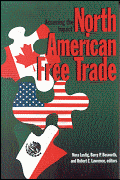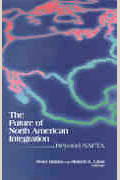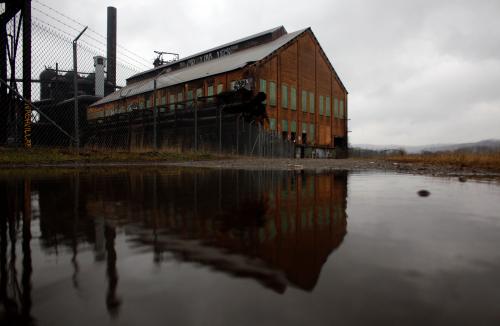Next month marks the 20th anniversary of the ratification of the North American Free Trade Agreement (NAFTA). The world economy looked quite a bit different in 1993 than it does today—the Internet was not yet in wide use, hundreds of millions of Chinese weren’t yet part of the global labor force, and Tom Friedman hadn’t yet declared the world “flat.” And 20 years into NAFTA, issues like immigration, security, and global warming have come to characterize policy discussions between the United States and its continental neighbors.
Yet more than ever, trade defines the North American relationship. In both quantity and quality, trade on the continent is distinct. The United States trades as much with Canada and Mexico as it does with Japan, Korea, and the BRICS—Brazil, Russia, India, China, and South Africa—combined. More than that, North American production and trade is no longer characterized by the exchange of finished products alone, but also by the co-production of advanced goods across the continent—in sectors such as aerospace, automotive, and electronics—linked tightly through value chains. As evidence of that, at least 25 percent of what we import from Mexico and Canada is actually American-made content; for China, that share is just 4 percent.
Until now, though, we have known very little about where that trade actually takes place. Our new Metro North America report and interactive aim to fill that gap by diving below the national level to locate the advanced industries and trade routes most critical to North American competitiveness. It finds that they are rooted in a network of metropolitan economies that stretch well beyond the border, trading and co-producing with one another as they anchor an increasingly integrated North American economy.
Firms—the primary architects of this phenomenon—now locate different stages of production in each country to maximize cost-efficiency and product quality. Regardless of which country they choose, advanced manufacturers require the interplay of skilled workers, innovation, and dense clusters of suppliers that metro areas uniquely combine.
National trade, therefore, is really just the sum of the trade that occurs among our metro areas. Across North America, 58 percent of the value for all goods trade between the U.S. and Canada and Mexico happens between a network of 432 metropolitan areas. For six critical advanced industries—aerospace, automotive, electronics, machinery, pharmaceuticals, and precision instruments—the metro share rises to 69 percent.
Undergirding this network are massive flows between the continent’s largest metropolitan areas. Twenty-five U.S.-Canada metro pairs, led by New York and Toronto, and 15 U.S.-Mexico metro pairs, led by Los Angeles and Mexico City, each traded more than $1 billion in goods in 2010. Clearly, trade goes well beyond the border; more than three-quarters of advanced-industries trade with Mexican and Canadian metro areas originates or terminates in non-border U.S. metro areas. Whether it’s Detroit and Toronto in automotive, San Jose and Mexico City in electronics, or Seattle and Montreal in aerospace, the specific assets that fuel industrial competitiveness reside in major metros that link and grow together.
By embracing each other as partners rather than competitors, the United States, Canada, and Mexico would recognize that nascent trends toward re-shoring and near shoring, and shifting labor, energy, and technology dynamics, are favorably positioning North America as a production platform for the world.
But this will take a change in course. Over the past two decades, the North American share of world exports has steadily declined. Federal efforts remain critical to reversing that decline, of course. The continent needs an infrastructure upgrade, a more streamlined regulatory and trade environment, and access to foreign markets through free and fair trade.
Yet bolstering North American competitiveness ultimately begins with the continent’s metropolitan economic engines. Political, corporate, and civic leaders in cities and metros must also act with new purpose, setting globally-oriented economic visions for their places, investing smartly in the service of those visions, and leveraging their distinct sets of continental trading partners to mutual benefit.
Next week we’ll be writing from Querétaro and Mexico City, where our Global Cities Initiative will hold its second annual global forum. Leaders at the city, regional, state, and national levels in all three countries will discuss new opportunities to trade, invest, and grow jobs in our shared industries. We’ll explore how together, they represent a new map of North American trade that may hold the key to a broader continent-wide prosperity.
The Brookings Institution is committed to quality, independence, and impact.
We are supported by a diverse array of funders. In line with our values and policies, each Brookings publication represents the sole views of its author(s).










Commentary
The New North American Trade Map
November 7, 2013